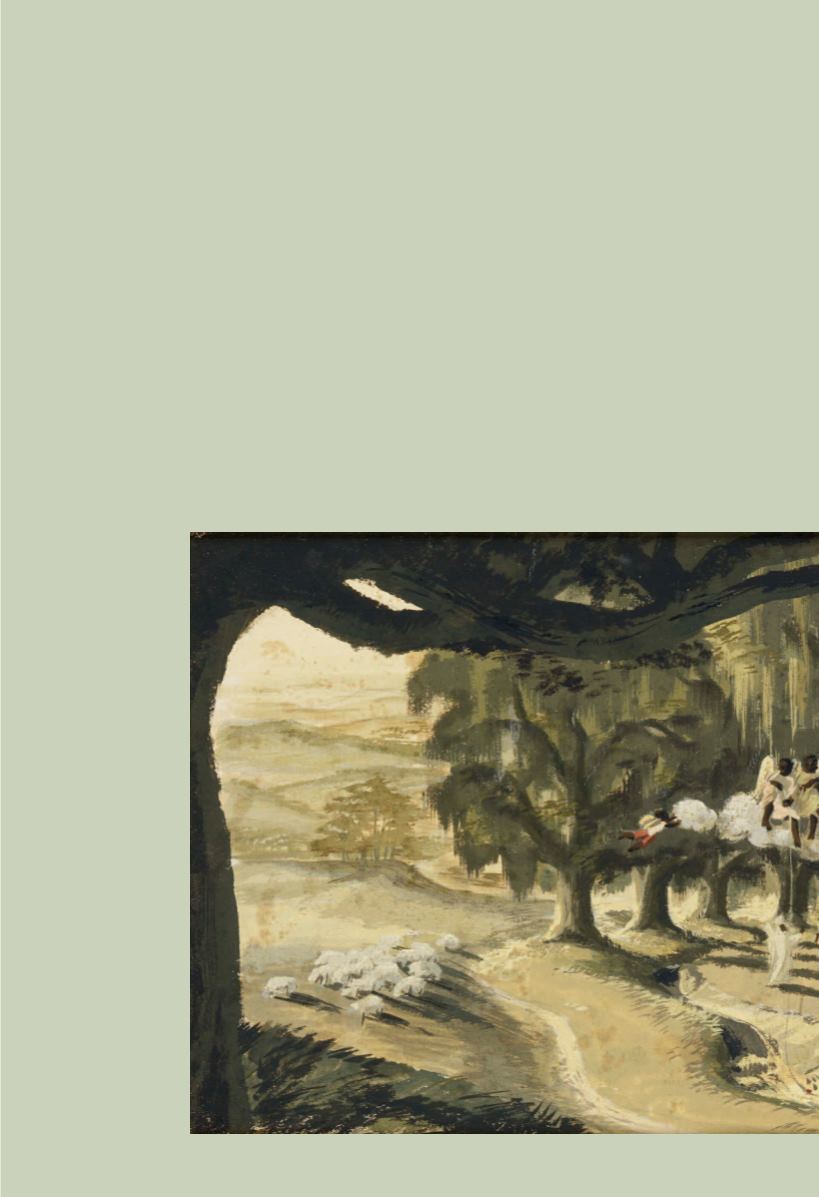

While the film was heavily criticized for its simplistic and stereotypical portrayal of African Americans,
The Green Pastures
offered an important and rare insight into the real religious practices of the
South. Despite being produced at the height of The Great Depression, the film was a significant
opportunity for the stars of the all-black cast including Rex Ingram, Oscar Pollock, Edna Mae
Harris, and George H. Reed, as well as the hundreds of extras the film employed.
To reduce production costs, the film was shot entirely on a 300x175 foot soundstage in Burbank,
California. In order to accomplish the illusion of rolling hills and expansive canopies of Spanish
moss,Art Director Allen Saalburg was given the task of painstakingly designing the logistics of each
scene.The set designs in this archive reveal the mind of a problem solver and artistic genius. “Even
the Exodus scenes which utilized hundreds of principals and extras were managed indoors. . . .
Saalburg used what is technically known as ‘forced perspective’ to achieve the necessary effects.”
(“Forced Perspective Used in Filming “Pastures”The NewYork Times 3 June 1936.) His careful
calculations and strategically placed props expanded the camera’s eye by a factor of six. Critics at the
time universally praised the grandeur of the film, heralding the visual effects as an unprecedented
achievement.With the film being shot and released in black and white, Saalburg’s colorful renderings
lend further insight into the creation of Hollywood magic with the help of an artist’s touch.
Provenance:The archive comes directly from the artist’s estate and appears to be complete, except for the
eight designs purchased by Gertrude VanderbiltWhitney for theWhitney Museum of American Art.
Lot 175 continued
While the film was heavily criticized for its simplistic and stereotypical portrayal of African Americans,
The Green Pastures
offered an important and rare insight into the real religious practices of the
South. Despite being produced at the height of The Great Depression, the film was a significant
opportunity for the stars of the all-black cast including Rex Ingram, Oscar Pollock, Edna Mae
Harris, and George H. Reed, as well as the hundreds of extras the film employed.
To reduce production costs, the film was shot entirely on a 300x175 foot soundstage in Burbank,
California. In order to accomplish the illusion of rolling hills and expansive canopies of Spanish
moss,Art Director Allen Saalburg was given the task of painstakingly designing the logistics of each
scene.The set designs in this archive reveal the mind of a problem solver and artistic genius. “Even
the Exodus scenes which utilized hundreds of principals and extras were managed indoors. . . .
Saalburg used what is technically known as ‘forced perspective’ to achieve the necessary effects.”
(“Forced Perspective Used in Filming “Pastures”The NewYork Times 3 June 1936.)
His careful calculations and strategically placed props expanded the camera’s eye by a factor of six.
Critics at the time universally praised the grandeur of the film, heralding the visual effects as an
unprecedented achievement.With the film being shot and released in black and white, Saalburg’s colorful
renderings lend further insight into the creation of Hollywood magic with the help of an artist’s touch.
Lot 175 continued









